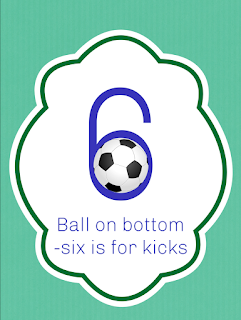Parenting Book Review - The 5 Love Languages of Children
Initial Impression before reading:
Andrew and I read the original 5 Love Languages book for couples shortly after we were married (10 years ago) so I was familiar with the concepts of a primary language for each person and the need to learn to speak that language to convey love. It makes sense that the same would be true for children. I was looking forward to learning how to determine a child's love language.Run down of the book:
Chapter 1: Introduction to the Emotional (Love) TankChapters 2-6: 5 Love Languages explained
Chapter 7: Determining primary love language based on age
Chapters 8-10: Further applications - discipline, learning/motivation, and anger management
Additional information:
Chapter 11: Explanation and applications for single parents
Chapter 12: 5 love languages in marriage promo
Epilogue: Notes from authors about what might be ahead for the reader
Lowlights:
There were some low-key generalizations about boys or girls that I could have done without (nothing terrible, just distracting for me). I also found the insertion of Christian references a bit stilted at times, sometimes they had value added for me but other times, sadly not.
As a whole I did not like the chapter on discipline, though the piece about Making Requests and Love Before and After Discpline helped redeem it a bit for me.
I understand why they included chapter 12, but found it a bit tacky that they basically used an entire chapter to promote their other book. Perhaps, they were thinking it would be helpful for people who weren't ever going to buy it?
As a whole I did not like the chapter on discipline, though the piece about Making Requests and Love Before and After Discpline helped redeem it a bit for me.
I understand why they included chapter 12, but found it a bit tacky that they basically used an entire chapter to promote their other book. Perhaps, they were thinking it would be helpful for people who weren't ever going to buy it?
Highlights:
Children under age 4 need all five love languages spoken to them, continuing with all as they age, but if your child is needing an extra boost of love, focus on their primary love language. The more I read through chapters 2-6, the more I realized how important it is to provide each child with love from all the languages.- Observe How Your Child Expresses Love to You
- Observe How Your Child Expresses Love to Others
- Listen to What Your Child Requests Most Often
- Notice What Your Child Most Frequently Complains About
- Give Your Child a Choice Between Two Options
Chapter 9 had some good examples on how to use your child's love language to motivate them and have them feeling confident as they go to school - which impacts their ability to focus and do well.
The anger management chapter (10) started slow for me, but it got better after the first couple pages. Learning to help your child mature in anger management is something I think all parents will find useful.
The epilogue's final page contains the concept of an individualized set of requirements to be a good parent. While I wouldn't choose the same requirements as the author I did like the premise and wrote my own. The first was taken from this book.
- Keep my children's emotional love tanks full - speak the five love languages.











Comments
Post a Comment